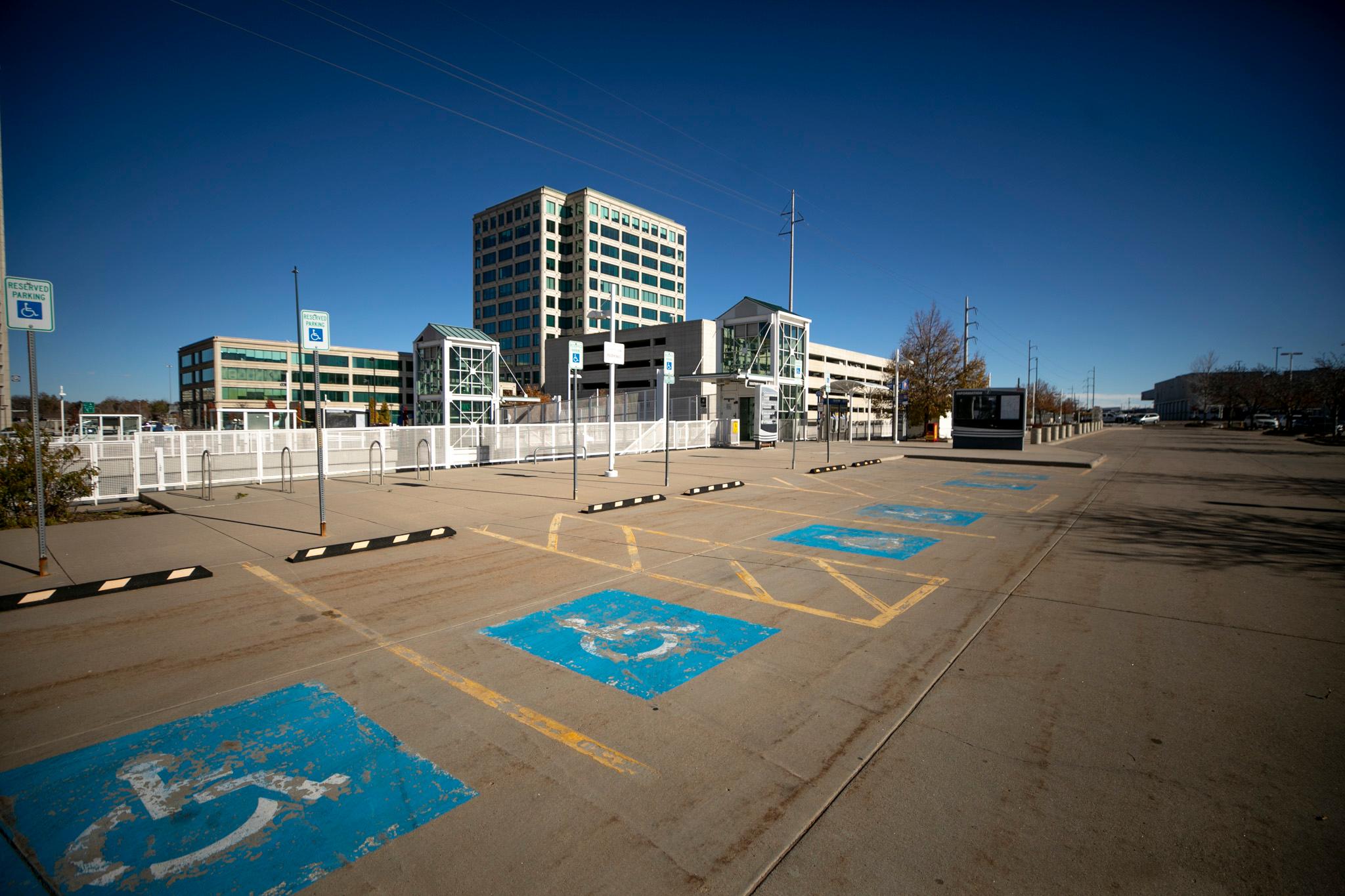Big changes could be coming to the University Hills neighborhood skyline.
A developer wants to transform an underused parking lot at RTD’s Colorado Station, near Colorado Boulevard and Evans Avenue. The developer, Delwest, aims to create 695 homes in two 20-story towers and a six-story building.
The plan, first reported by Build Up Denver, comes as RTD tries to encourage transit-oriented development (TOD) on its often empty parking lots. The agency’s goal: Help solve Denver’s shortage of affordable housing and incentivize more people to use public transportation.
The project would replace the current parking lot, but it also would add hundreds of parking spots for transit riders and residents of the proposed new apartments.

The developer’s architect has submitted concept plans to the city’s planning department. RTD is already talking with Delwest about the project.
But there’s no guarantee that these plans become reality, especially at such an early stage.
“A concept plan does not equal a project,” said Chessy Brady, RTD’s transit-oriented development manager.
Delwest was not immediately available for comment.
What’s the plan for the Colorado Station project?
As proposed, the 695 homes would be income-restricted to people making between 30 and 120 percent of the area median income, currently $27,400 to $109,560 for an individual or $35,200 to $140,880 for a family of three.
The project would be built in three phases.
The first phase would be a 20-story building along Birch Street and Evans Avenue with 315 homes. The second phase would be a similar 20-story building along Evans Avenue. Both of the towers would include a mix of studios, one- and two-bedroom units.
The third phase would include a six-story, 55-unit building, with one-, two- and three-bedroom units for lower-income renters.
All three buildings would have space for retail businesses.

What about the parking?
Transit-oriented development is supposed to discourage car use. But as planned, this project includes more parking spots than people.
The plan would replace RTD’s current 363 parking spots with more than 700 spots. Those spots would be divided between transit riders and residents of the new building, although it’s not clear how.
The question of how much parking the project needs is still under discussion, said Harsh Parikh of Santulan Architecture. But people living in the new buildings will still want cars, he added.
While the city is trying to cut back on car use, Denver still has “a big first mile, last mile problem,” Parikh said. Yes, transit will get residents to different parts of the city. But efficiently navigating into neighborhoods can be a challenge.
“People do need cars, even though overall car-ownership ratios are hopefully trending downward,” Parikh said. “But still, we can't end up with a project that's helplessly under-parked there.”
Editor's note: This article was updated Nov. 20, 2024, to correct the spelling of Chessy Brady's name.













